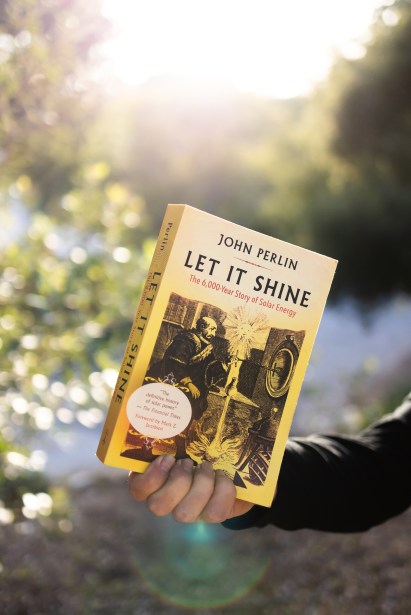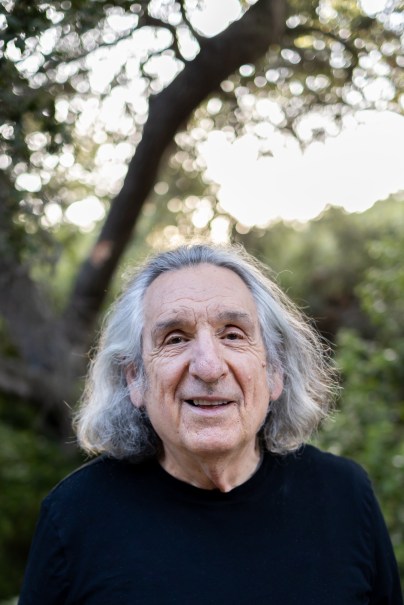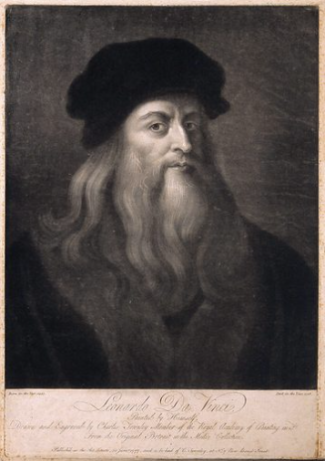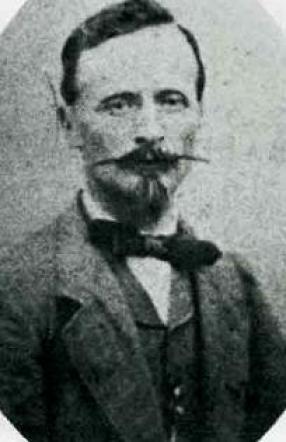Where Does Solar Go from Here?
UC Santa Barbara’s John Perlin Illuminates Our Sun-Powered Past, Present, and Future in ‘Let It Shine’
By Nick Welsh | May 5, 2022

John Perlin lives, breathes, and dreams in science, and his particular passions are often related to alarming developments around the world, whether the climate crisis or the destruction of trees and forests. He wrote Let It Shine: The 6,000-Year Story of Solar Energy in 2013, and the newly released paperback edition contains a plan for a 100 percent renewable future, “both an answer to the quest to end the heating up of our planet and our reliance on petroleum autocrats like Putin,” Perlin said. In the past decade, photovoltaics moved from expensive to now the least costly source of electricity, and solar arrays capacity increased from a billion watts to a trillion watts today. A visiting scholar in UC Santa Barbara’s Physics Department, Perlin replied to questions about his book and solar energy in general in Santa Barbara.
Years back, I rode a motorcycle that ran on a solar-powered steam engine someone built in their garage. Admittedly, it didn’t go fast, and it didn’t go far, but it was definitely ingenious. Any new applications you see in the future? And I thought I was a solar nutcase! Sure would like to meet the guy who built that solar steam engine. But panels now can elegantly power electric cars, bicycles, and motorcycles that can travel at normal speeds, and you can pump the solar fuel from your rooftop.
In Santa Barbara, solar panels on the roof of The Granada Theatre parking garage encountered arguments about sightline intrusions and other aesthetic considerations. What grade would you give the city — the birthplace of the environmental movement, in case you’d forgotten — for maximizing its solar opportunities? First, let’s get past the local grand delusion that Santa Barbara was the birthplace of the environmental movement. Have you not heard of Rachel Carson’s 1962 revelatory ecological bombshell Silent Spring?

Now that I have popped that balloon, let’s talk about UC Santa Barbara. The real change there started in 2005 with the screening of The Power of the Sun to a standing-room-only crowd. The documentary — by Walter Kohn and Alan Heeger, both Nobel laureates, and me — inspired students and faculty to develop the first solar-powered building on the campus. They hired me as their technical advisor, and after many struggles with the campus bureaucracy, we prevailed and built a 6.2-megawatt on-site capacity. The Hope Elementary School District and S.B. City College then covered their parking lot structures with solar panels and shamed the City of Santa Barbara to do the same.
The California Public Utilities Commission is hearing ferocious arguments about the rates big utility companies pay home rooftop solar-power generators. A pretty convincing case has been made that the state’s poorer customers are effectively subsidizing the residential solar generators. How important are these homeowner subsidies? Every time I attended a supervisors’ meeting regarding low growth, developers would argue the case that if they didn’t get their way, rents would rise and force the poor to leave S.B. You would think they were Habitat for Humanity volunteers rather than entrepreneurs. The same goes for the utilities.
The real issue is: How can rooftop solar best lower the output of greenhouse-gas-polluting electrical generating systems? For non-battery systems, that means moving the usage of dishwashers and laundry out of the 4-9 p.m. period, when power usage peaks and photovoltaics no longer generate electricity. Also, it means pumping electrons into your electrical vehicle after this crucial time period. Here in Santa Barbara, facing solar panels to the west helps usage during the late afternoon, as the panels will still produce electricity in the summertime much later than the usual south-facing arrangement.
More generous incentives should go to those purchasing batteries, as this will extend the use of sun-generated electricity into the evening and further curtail the need for fossil-fuel generators. Keep in mind, the utilities are not only asking for the reduction of net metering but also an exorbitant surcharge just for investing in solar equipment. To punish people for doing the right thing makes no sense, though it makes more cents for the utilities, which is their bottom line and motivation. It will also destroy the solar industry, as the utilities are not promising to replace rooftop solar systems with large-scale solar.
You’ve objected that massive, industrial-scale solar arrays are inherently inefficient, but has anything changed your mind? What I object to in the case of photovoltaic farms is the land space required, intruding on formerly uninhabited terrain and spawning miles of new transmission lines. We’ve seen these lines cause some of California’s worst wildfires. Yet millions of square feet of rooftops remain available — and not only rooftops. Solar cells can become building material to cover the skin of a structure and possibly the windows themselves. As Markus Real, the pioneer of rooftop solar, explained to me almost 40 years ago, localized solar makes the most sense: “The roof is already there. The roof is free. The electrical connections are there. It is perfectly logical to consider builds as spaces for solar cells.”

You’ve written that a woman scientist was the first to establish the link between carbon dioxide and what’s come to be known as climate change. Are there other unsung women in the history of solar? Yes, yes, yes. Janice Brown flew the first solar-powered airplane, whose initial design came from my department at UCSB. In her own words: “I could hear the 11-foot feather-light propeller windmilling to take-off speed, sounding like my sewing machine. Moments later, we were off the ground and climbing. The first piloted aircraft powered solely by sunlight was airborne. And I was at the controls.”
There’s also Dominique Campana, who graduated from engineering school in Lyon, France. “It was the 1970s,” she explained. “Young people like myself were interested in all that was natural, protecting nature, and relying on natural sources of energy.” She attended a lecture by Dr. Wolfgang Palz, known in France as Mr. Solar, where he suggested photovoltaics could power water pumps but said no one had the guts to try it. Campana took up the challenge. She installed a pump powered with a half-kilowatt photovoltaic array in the mountains of Corsica where she lived. The pump worked flawlessly. Thanks to Campana’s initial effort, photovoltaic-powered pumps have turned into a billion-dollar business that saves women from the arduous task of carrying stream water many kilometers back to their villages.

And let us not forget Dr. Mária Telkes, inventor of the portable solar desalinator. Sometimes it takes an event that moves the hearts and minds of a nation to inspire a scientist to come up with a major discovery. In the case of Dr. Telkes, it was the downing and rescue in 1943 of Eddie Rickenbacker, the ace pilot who shot down the infamous Red Baron in World War I. Her solar desalinator became standard fare for the Navy and Coast Guard, “since,” in the words of the military, “drinking water is the most essential thing” for those stranded in the sea. Rickenbacker himself praised the new device, stating, “The story of my own experience as a survivor would have been stripped of much of its aura of stark tragedy had the solar still been available at the time.”
In the history of any scientific field, it seems, there’s always a dark chapter involving strides made by Nazi scientists. Anything like that with solar? The Nazis, as it turns out, were violent opponents of the solar buildings that had become the mainstay of modern architecture after WWI for functionality’s sake. The Nazis embraced Teutonic culture and medieval peaked roots and small windows. When the Führer took control, those advocating solar architecture had to flee for their lives.
I also learned a bright side, actually, in researching Let It Shine. An ex-Nazi was responsible for the first adoption of solar cells for practical use. Being Jewish, I was hesitant to approach him. So I asked my mentor for advice: Walter Kohn, whose parents were killed in the Holocaust and who escaped in the Kindertransport. Walter advised me to go for it. So, I called the old-age home where Hans Ziegler was residing.
The U.S. military had picked him up along with Wernher von Braun and brought them to America under the notorious “Operation Paperclip.” They legally entered the United States after their Nazi past was laundered so they could contribute to America’s Cold War effort. Dr. Ziegler became the de facto director of the U.S. Signal Corps, which provides power equipment for the armed services. Ziegler, asked to look into the new silicon solar device developed at Bell Laboratories in 1954, immediately saw this as the panacea to the nation’s power needs and his private road to redemption from his Nazi past. He immediately became a solar evangelist and singlehandedly fought the military bureaucracy to place solar cells on U.S. space satellites. Previously, both of the U.S.S.R.’s Sputniks died in less than a month due to their reliance on non-rechargeable batteries.
With the launch of the solar-powered Vanguard satellite in 1958, solar cells proved their worth. The Vanguard ran for years. Since you couldn’t extend a gas pump to the satellite and the radiation from nuclear power required too much weight for shielding from the instrumentation, the only choice was solar. Every spy satellite sent up at Vandenberg Space Force Base uses photovoltaics! Indeed, as Martin Wolf, a pioneering photovoltaic scientist told me, “The onset of the Space Age was the salvation of the solar cell industry.”

How do you react to the argument from nuclear power supporters that solar and wind can contribute just a small fraction of the motherlode that’s needed? How big of a slice of the pie can solar provide? A new nuclear plant produces electricity for a cost between 25 to 30 cents a kilowatt hour; a solar plant generates electricity at about 3 cents a kilowatt hour. That’s not to mention the societal damage that one nuclear accident might cost. Or, like in Ukraine, an enemy taking out a nuclear plant. Or how about perpetual storage costs required for the spent nuclear fuel? As the introduction to the new edition of Let It Shine demonstrates, solar, wind, and water can do it all. Just because solar cells are quiet and quite lithe, they produce same electrons as do those huge macho plants with their giant turbines. As laws of physics have proclaimed: “All electrons are equal.”
Getting back to your book, you wrote about a guy from Baltimore named Clarence Kemp, who created something called a Climax Solar Water Heater back in the 1890s. What is a Climax Solar Water Heater and what made it special, besides the name? And did it work? The Climax Solar Water Heater consisted of a number of shallow water tanks placed in a glass-covered wooden box and mounted on the roof. For several decades, a good deal of them covered many rooftops in Southern California. About 30 percent of those living in Pasadena heated their water with the sun at the end of the 19th century with the Climax. The Climax was replaced by the Improved Climax. Who wouldn’t want one!
Perlin’s Pantheon of Solar Heroes

Leonardo da Vinci, for his plans to build a mirror four miles in diameter: for practical use to heat swimming pools in Florence and to outdo the legendary accomplishment of Archimedes — worshipped during the Renaissance as the greatest technician ever to live — who allegedly burned the Roman fleet with the most powerful mirror ever built.

Horace-Bénédict de Saussure, the 18th-century designer of a glass-covered insulated box; when tilted to the sun, the interior would heat above the boiling point of water. In the eyes of 19th-century scientists, Saussure’s device modeled the dynamics of global warming.

Augustin Mouchot, who in the early 19th century built the first solar-powered steam engines and saw his prototypes soon replacing coal.
Support the Santa Barbara Independent through a long-term or a single contribution.




You must be logged in to post a comment.